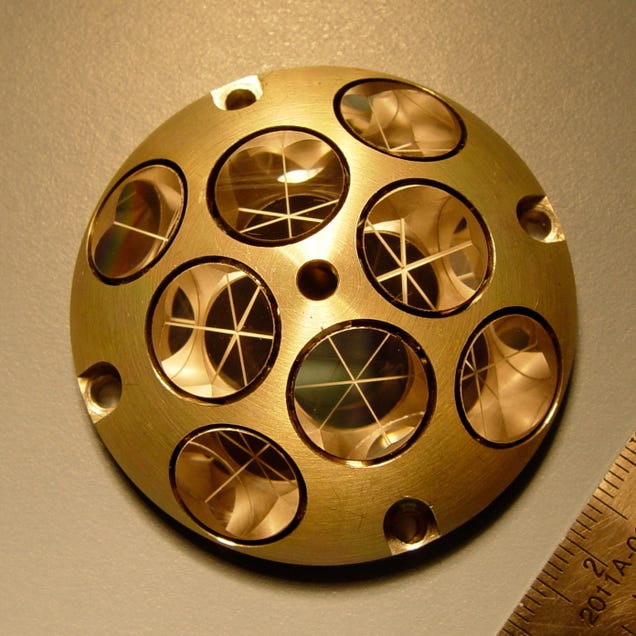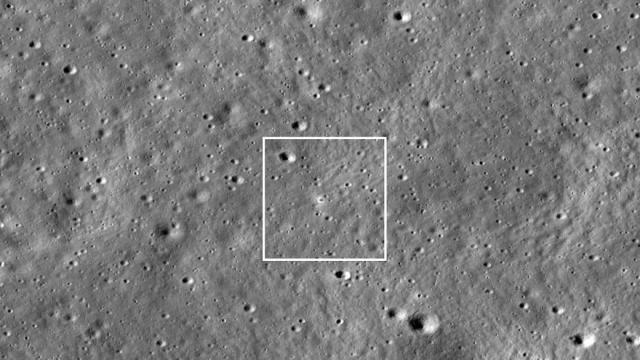NASA’s diligent lunar orbiter transmitted a laser beam to a dome-shaped aluminium device the size of a billiard ball on India’s Vikram lander, pinging its location on the Moon. This laser-enabled technique could one day help NASA astronauts find their way on the lunar surface.
The Lunar Reconnaissance Orbiter (LRO) pointed its laser altimeter instrument, called LOLA, toward a tiny retroreflector on Vikram, the Indian Space Research Organisation’s (ISRO) lunar lander, on December 12, 2023 at 3 p.m. ET. The pair of lunar missions were 62 miles apart (100 kilometres) when the orbiter registered light that had bounced back from the NASA retroreflector aboard Vikram, the space agency recently announced.
This brief exchange marked the first time a laser beam was transmitted and reflected between a moving spacecraft and one stationed on the lunar surface to determine its exact location. Transmitting laser pulses toward an object and measuring how long it takes the light to bounce back is used to track the locations of Earth-orbiting satellites from the ground, but doing that in reverse (sending laser pulses from a moving spacecraft to a stationary one to determine its precise location) is a new technique that could be utilized by future astronauts on the Moon.
“We’ve showed that we can locate our retroreflector on the surface from the Moon’s orbit,” Xiaoli Sun, who led the team at NASA’s Goddard Space Flight Center that developed the retroreflector on Vikram, said in a statement. “The next step is to improve the technique so that it can become routine for missions that want to use these retroreflectors in the future.”
The Laser Retroreflector Array, a partnership between NASA and ISRO, is only 2 inches (5 centimetres) wide with eight quartz-corner-cube prisms inside its dome-shaped aluminium frame. This tiny device is easy peasy; it requires neither power nor maintenance, and its unique configuration enables it to reflect incoming light from any direction back to its source.

LOLA, the altimeter on board NASA’s LRO, has primarily been used to map the Moon’s topography in preparation for future missions to the surface of the Moon. It dispatches five laser beams toward the Moon and measures how long it takes each one to bounce back, but there are large gaps between the beams which makes it less likely that the laser pulse will come into contact with a retroreflector on the lunar surface as the spacecraft orbits the Moon. It took the altimeter eight attempts to contact Vikram’s retroreflector, according to NASA.
“We would like LOLA to point to this Oreo-sized target and hit it every time, which is hard,” Daniel Cremons, a scientist at NASA Goddard, said in a statement. Keep practicing, LOLA. You got this!
